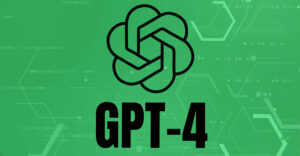Retail giant Walmart is going all in on developing its own generative artificial intelligence GPT-4 platform to drive sales and boost customer experience (CX).
This announcement puts Walmart on stage for the retail industry to see what this innovative technology means for the broader retail landscape. Will other big box retailers now get involved? How will GPT-4 and related technology impact the future of customer experience?
As part of its marketing makeover, Walmart unveiled its latest digital redesign to its retail website and mobile shopping app earlier this month. The new look sports bigger and glossier photos, along with videos and social media-inspired content that Walmart hopes will result in more purchases.
Walmart is focusing on the game-changing potential of natural language understanding (NLU) within large language models (LLM) at a retail-specific scale to boost its existing offerings, such as Text to Shop. That feature allows customers to add Walmart products to their cart by texting or speaking the names of the items they need. Walmart is using these LLMs as the platform foundation for its self-built models about products and how customers want to interact.
Whether Walmart succeeds in winning over its customers could directly impact other retailers to follow suit. Either way, a key factor is collecting their insights, according to Reed Cundiff, CEO of global research firm Sago (formerly Schlesinger Group).
“Automation has become an essential part of our daily lives, simplifying tasks without us even realizing it. Part of engaging with consumers on the application of AI is educating them on the technology,” Cundiff told The E-Commerce Times.
Consumer Sentiment to AI Adoption
However, understanding how consumers feel about AI is only important for brands that are explicitly asking them to adopt it over non-AI alternatives. If AI is only an ingredient under the surface, then consumer sentiment is less critical, Cundiff offered.
For example, word processing tools have advanced writing analysis to provide grammar suggestions and “next word” capabilities that make consumers’ lives easier. Nobody inquires about the AI and machine learning underpinnings.
“When we ask consumers to have direct and clear interaction with AI, like a chatbot, collecting feedback becomes more critical. It helps us understand barriers and bridges to adoption and identifies unexplored territory and “red lines” that consumers want to avoid AI crossing,” he explained.
Walmart’s recent advancement in conversational commerce plays into its implementation of AI amid its move toward a more social media-oriented approach to retail. In this process, the retailer has embraced AI across different areas of its business in recent years, be it product suggestions or inventory management. So leaning further into it as a commerce strategy feels very natural, according to Jordan Jewell, an analyst at e-commerce platform Vtex.
“The company recently revamped its website to feel more like a social media platform, so implementing different AI-powered experiences that feel more social and conversational could be a good way to drive engagement and build trust with their customers by personalizing the shopping experience for them,” he told the E-Commerce Times.
Leading the Retail AI Transition
Jewell sees this shift as absolutely influencing how other large retailers use social media in their selling strategy. Amazon and Walmart have long been neck-and-neck in the e-commerce space, so in the long term, he predicted that it might influence other retailers to invest more in AI.
“But in the short term, I think it will translate to increased investments in social selling tools since those are easier to implement on a shorter timeline. Every large retailer is on Facebook and Instagram. Still, they do not all have the back-end capability to implement and manage AI models, so that is where I suspect we will see longer-term investments being made,” he added.
A push from big box leaders will strongly influence other retailers to adopt and develop generative AI, asserted Marcel Hollerbach, co-founder and chief innovation officer at product-to-consumer (P2C) platform Productsup. Right now, everyone is still hesitant to throw their hat completely in the generative AI ring since some things, like ChatGPT and its implementation, are still uncertain.
“Instead of theorizing what the implementation of generative AI will look like, most retailers are waiting for the first great example,” he told The E-Commerce Times.
When big box retailers like Walmart adopt, develop, and announce their usage of AI, the technology’s relevancy accelerates significantly, reasoned Hollerbach. If Walmart is doing it, and it is successful, hesitancy is replaced with urgency.
“The urgency to adapt to customer needs and processes will make the business not only more efficient but also more profitable,” he observed.
Lagging Momentum Inherent
AI is booming in every industry right now, but some onlookers tend to forget that generative AI capability takes months, if not years, to develop and master, according to Hollerbach. Momentum to adopt and develop generative AI is slow-moving because it is a slow-moving project to get off the ground in the first place.
“While AI development seems to be moving at lightning speed, this could be its downfall in overall adoption and increased momentum in retail. Because there is still a multitude of logistics to be figured out before actual implementation can occur, retail momentum is not matching the AI momentum,” he noted
On top of that, immediate and sudden change is something for which all customers are ready. Retailers are keeping this in mind.
“Momentum has to start small, whether that is looking at what competitors are doing or ensuring customer satisfaction. Developing and adopting generative AI is a sliding scale,” said Hollerbach.
Enhanced Mobile Messaging for M-Commerce
Generative AI can significantly amplify mobile messaging strategies. It provides a variety of tools, capabilities, and vectors that enhance the customer experience, improve personalization, provide content optimization, and help streamline operations and internal data, according to Jeppe Dorff, chief product and technology officer at chat commerce platform as a service firm Clickatell.
Gen AI uses example-based data on user behavior, chat history, and purchasing and consumption patterns to identify the shortest path to a successful outcome for the consumer. It can also address the consumer with personalized intent and provide customized product recommendations.
“This helps businesses to identify the next best action for specific segments, drive retention, and accelerate customer acquisition. We have seen a significant increase in brand upsell, cross-sell, and customer satisfaction rates, and we have just begun to scratch the surface,” Dorff told the E-Commerce Times.
Another advantage is the ability of generative AI to thrive off an established link between a brand and the consumer to foster better and personalized marketing capabilities. This advanced interaction is where the new technology gets really exciting and highly beneficial for both consumers and brands, he offered.
AI has access to information from within the brand’s ERP, CRM, and OMS systems that correspond directly to existing data pertaining to the consumer. By learning from the individual consumer’s intents, sentiments, and patterns of engagement, AI will create much more personalized acquisition and retention campaigns to address the consumer in a way that resonates dramatically.
Dorff explained that “leveraging historical transactional data that resides within the brands’ domains with dynamic message exchanges between consumers and brands allows AI in chat commerce to create dynamic content, real-time customer journeys, and predict future consumer behaviors, preferences, and trends well in advance for an individual consumer as well as an accumulated base of consumers.”
Human-AI Partnership for Optimal Insights
Striking a balance between AI and human insights needs to focus on being more of a partnership rather than a balance, cautioned Cundiff. This is similar to how manufacturing has operated as a partnership between man and machine for hundreds of years.
“Optimizing the roles of humans and machines in collaboration has always produced the best results,” he said. “It is crucial we use the machine for what it does best — brute force calculations at scale, speed, and precision in ways humans cannot match.”
Relying too heavily on the human factor and forgoing the opportunity to collaborate with the machine keeps us stuck. The relationship then lacks the speed and scale necessary with today’s pace of business, he cautioned.
When we overemphasize the machine’s role in collecting insights, we often miss the bias in a data set. We also miss the external forces shaping a business question outside of what we feed into the machine or the conceptual leap that takes place from analysis to insight.
“This is where humans come in. Humans bring a level of conceptual and creative thought to the insight collection process and to the management of the front and back ends of the research process that machines simply cannot replicate,” he added.
Much Will Depend on the Brand ‘Voice’
One primary concern of would-be adopters is how generative AI might interfere with their mobile messaging strategies. But brands can do this without losing their brand voice, assured Dorff.
The brand’s voice is critical in everything from marketing to operations. It prescribes the way a brand engages with consumers.
“Incorporating a brand’s voice is harder than building the AI itself. It requires careful planning and a new way for brands and communications to consider voice,” he emphasized.
Historically, “voice” was expressed by humans with oversight and was constant, yet planned and adjustable. With AI, this will happen beyond planned campaigns and website releases and without real-time monitoring, he noted.
Training and defining what “voice” is down to the spoken word will be necessary. High-frequency reviews and constant, real-time monitoring are essential to teaching the algorithm precisely what the brand’s voice is.
Training AI for Branded Content
One emerging concept is to train the models on branded content and feed all digital channel communications data into the models to refine the “digital voice” over time. This approach is almost like it is running in parallel with existing marketing and voice creation processes, according to Dorff.
In some instances, this may include AI in marketing campaign development to ensure that the model and brand collaborate, thereby improving the learning process. What is critical is not the AI itself but the journey that the brand is on.
“These things will not happen overnight, and they will not happen without the right orchestration platforms and data collectors within the messaging channels,” Dorff said.

























































